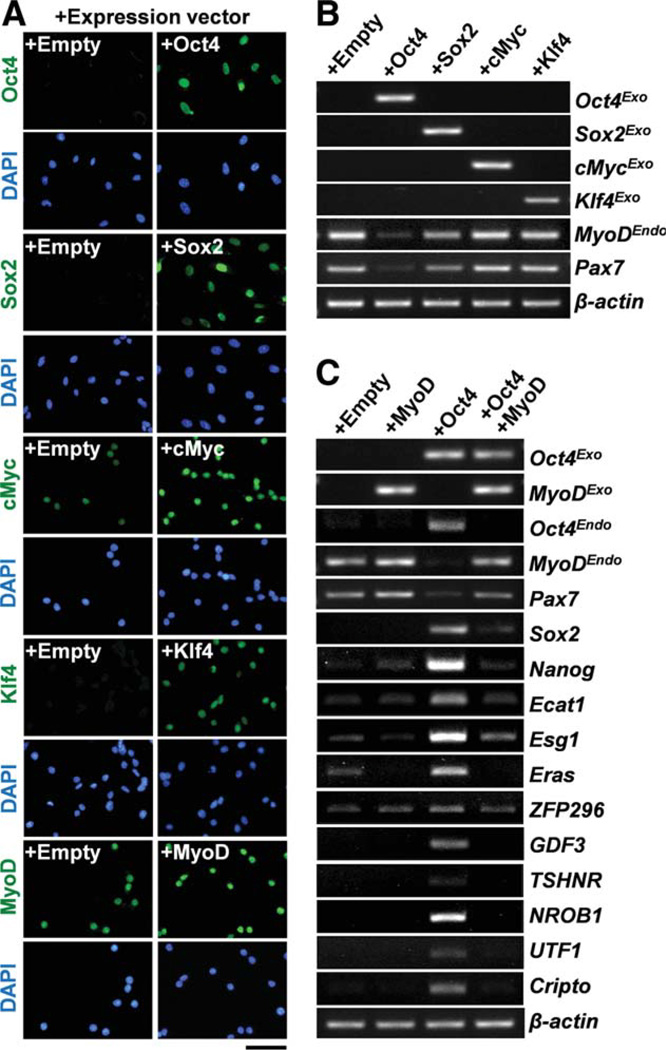Figure 4.
Expression of Oct4 suppresses MyoD expression and induces ESC-specific gene expression. (A): Retroviruses expressing Oct4, Sox2, cMyc, Klf4, or MyoD were infected to primary myoblasts. Trans-gene expression was detected by antibodies for Oct4, Sox2, cMyc, Klf4, and MyoD (second column). Empty denotes myoblasts infected with an empty expression vector as a control (first column). Scale bar = 50 µm. Nuclei were counterstained with DAPI (blue). (B): Reverse transcription-polymerase chain reaction (RT-PCR) was performed for RNA from myoblasts at 48 hours after infection with retroviral expression vectors for Oct4, Sox2, cMyc, or Klf4. Exogenous Oct4 (Oct4Exo, Sox2 (Sox2-Exo, cMyc (cMycExo, or Klf4 (Klf4Exo) expression was detected. Ectopic expression of Oct4 or Sox2 but not cMyc or Klf4 suppressed MyoDEndo and Pax7 expressions. (C): RT-PCR was performed for RNA from myoblasts at 48 hours after infection with retroviral expression vectors for Oct4 or MyoD, MyoD+Oct4. Ectopic expression of Oct4 induced many ESC-specific genes such as endogenous Oct4 (Oct4Endo ; third lane) compared with the control empty vector (first lane) or MyoD (second lane). These Oct4-induced gene expressions were abrogated by forced expression of MyoD (fourth lane), β-actin was monitored as a loading control in (B) and (C). Abbreviation: DAPI, 4′,6-diamidino-2-phenylindole. [Color figure can be viewed in the online issue, which is available at wileyonlinelibrary.com.]

